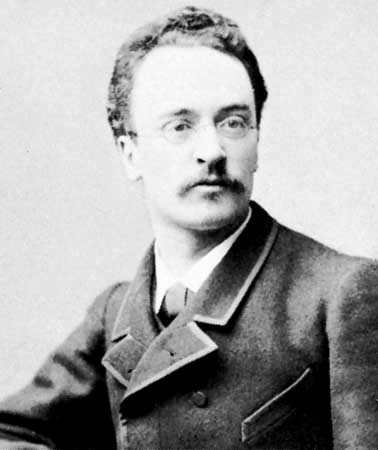Editors note: Harold is one of the co-hosts of the Centre Steer Podcast. The Centre Steer Podcast is a podcast about all things Land Rover and British motoring. I recommend that you subscribe to be a well rounded offroading enthusiast.
One hundred years ago, the world lost a great engineer, and a great social visionary.
The son of Bavarian immigrants, Rudolf Christian Karl Diesel was born in Paris in 1858. He spent most of his childhood in France, but returned to Bavaria to complete his schooling. He went on to study engineering, and in 1880 he graduated with highest academic honors from the Royal Bavarian Polytechnic of Munich. After graduation, Diesel’s first job was in Paris, assisting in the design and construction of a modern refrigeration and ice-making plant. A year later, Diesel was managing the plant. He stayed busy doing research and development for the refrigeration industry, and received several patents.
After several years, he became interested in engine design. Diesel felt that James Watt’s steam engine, while revolutionary in its day, still needed improvement, as he figured it wasted close to 90 percent of the fuel it consumed. He envisioned an engine that would be inexpensive to own and operate, so that independent craftsmen and artisans could afford to compete with the large industrial concerns.
He began experimenting with steam engines, and was attempting to build a variation of the steam engine that used ammonia vapor, but the engine exploded during testing, and almost killed him. After several months in the hospital, Diesel decided to find a better way.
Drawing on his extensive knowledge of thermodynamics, Diesel believed that burning fuel slowly, but at high pressure, could produce efficiencies approaching 75 percent. He understood the relationship between the volume, pressure, and temperature of gases, and he knew that if air was compressed very tightly in the engine’s cylinder, that it would become very hot, and if a fuel were injected at the end of the compression stroke, the mixture would ignite spontaneously without a spark.
Interestingly, this concept, while beneficial in Diesel’s design, is quite detrimental in spark-ignited engines. Almost every advance in power output of a spark-ignited engine needs to be countered by some means to prevent the unintended spontaneous ignition caused by increased heat and pressure in the cylinder.
Rudolf Diesel’s design for a compression-ignited internal combustion engine was patented in 1892. By 1912, there were over 70,000 Diesel engines in use worldwide. The following year, Diesel traveled by steamship to England to attend the groundbreaking of a new engine factory, and also to meet with the British Navy about using his engine in submarines. He never made it, as he vanished without a trace from his cabin during the night. Ten days later, a body was found floating in the North Sea near Norway; eventually it was identified as Rudolf Diesel.
Many conspiracy theories were soon offered, ranging from foreign interests trying to prevent the British navy from getting Diesel’s technology, to suppression by the big oil and coal industries. However, there was little evidence to support these theories, and given the state of Diesel’s finances, and a history of emotional problems, it is generally believed that his death was a suicide.
Since his untimely death in 1913, Rudolf Diesel’s engine designs have been greatly improved. Before long, diesel engines replaced steam power on the railroads, and eventually they became the standard of the shipping and trucking industries. In the past few decades, advances have also been made in small engines. Thanks to their simplicity, durability and high fuel efficiency, almost half of the passenger cars in Europe are now powered by diesel engines. They’re still not very common in the U.S., but the number of diesel powered cars and light trucks are growing as the newest designs are much smoother, quieter, and cleaner than their predecessors.
An aspect of Rudolf Diesel’s vision which has only recently been fully realized, is the ability to operate with a variety of fuels. By making the engine compatible with any fuel, he reasoned that small businesses would never be at the mercy of oil supplies controlled by big industries. The petroleum product that we know as “diesel fuel” didn’t even exist until after his death. Mr. Diesel originally conceived his engine to run on coal dust, which was a common waste product of the day, or on vegetable oil, which could be produced locally by the engine’s owner or his neighboring farmers. In fact, the original prototype diesel engines were run on peanut oil. This multifuel capability has become the subject of much experimentation in recent years, as both scientists and amateur hobbyists search for ways to lower operating costs, reduce America’s dependence on foreign oil supplies, and develop a renewable energy source as the world’s fossil fuels are rapidly running out.
It would be interesting to see what the world would look like today if he had lived a decade or two longer. A century later, we are finally beginning to understand the extraordinary vision of Rudolf Diesel, a troubled genius who lived ahead of his time, and died before his time.
Editor: I want to say a big thank you to Harold from the Centre Steer Podcast for sharing this article. Be on the lookout in the future for more informative and entertaining articles from Harold. And be sure to go subscribe to the Centre Steer Podcast for all the Land Rover news you need.



